History of the Old Brick Church
The Birthplace of the Associate Reformed Presbyterian Church
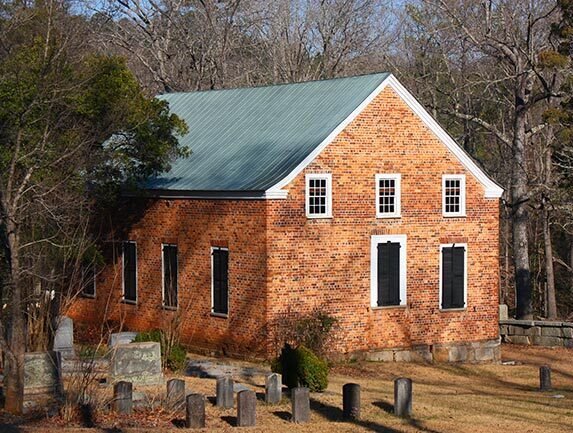
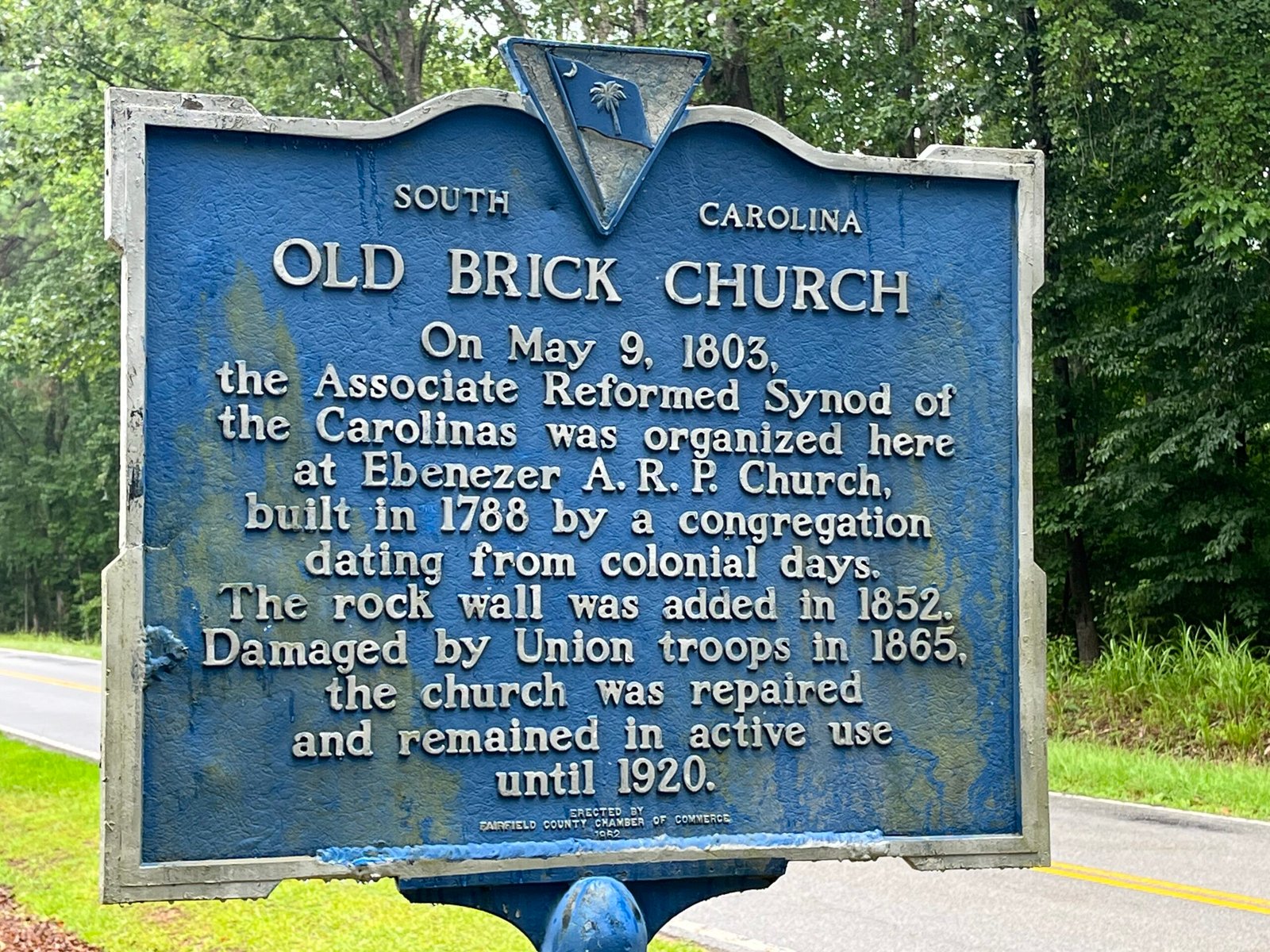
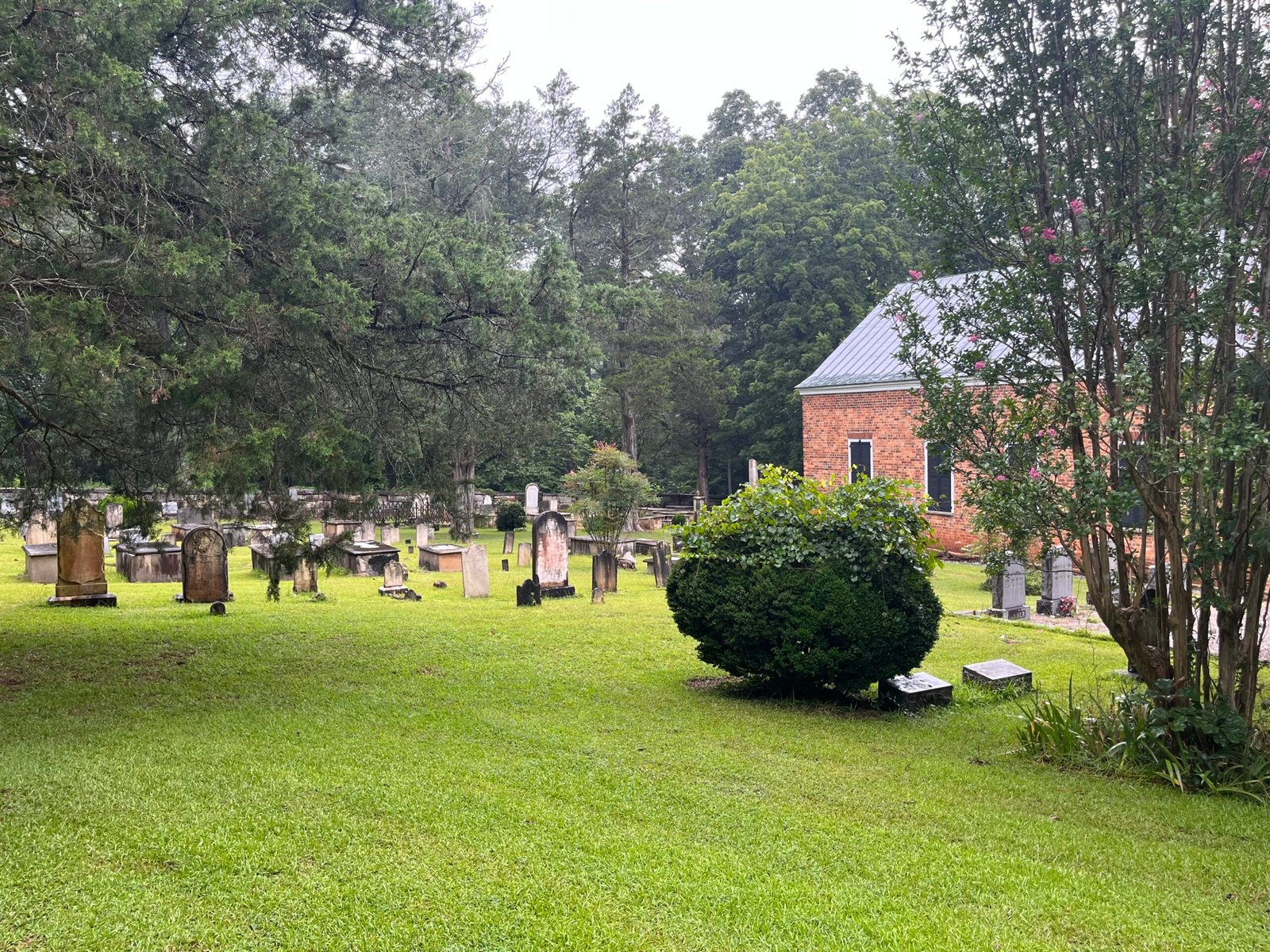
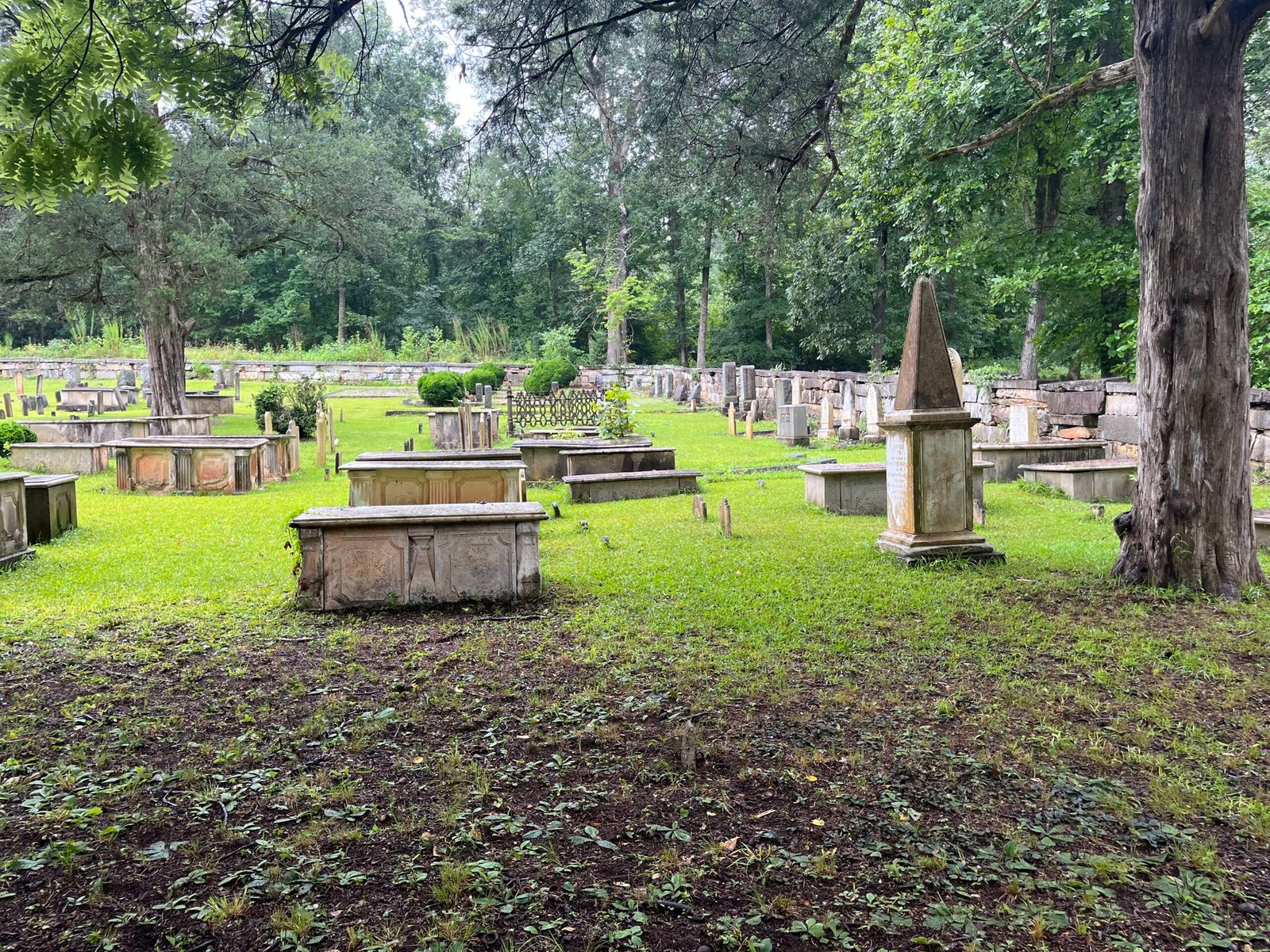
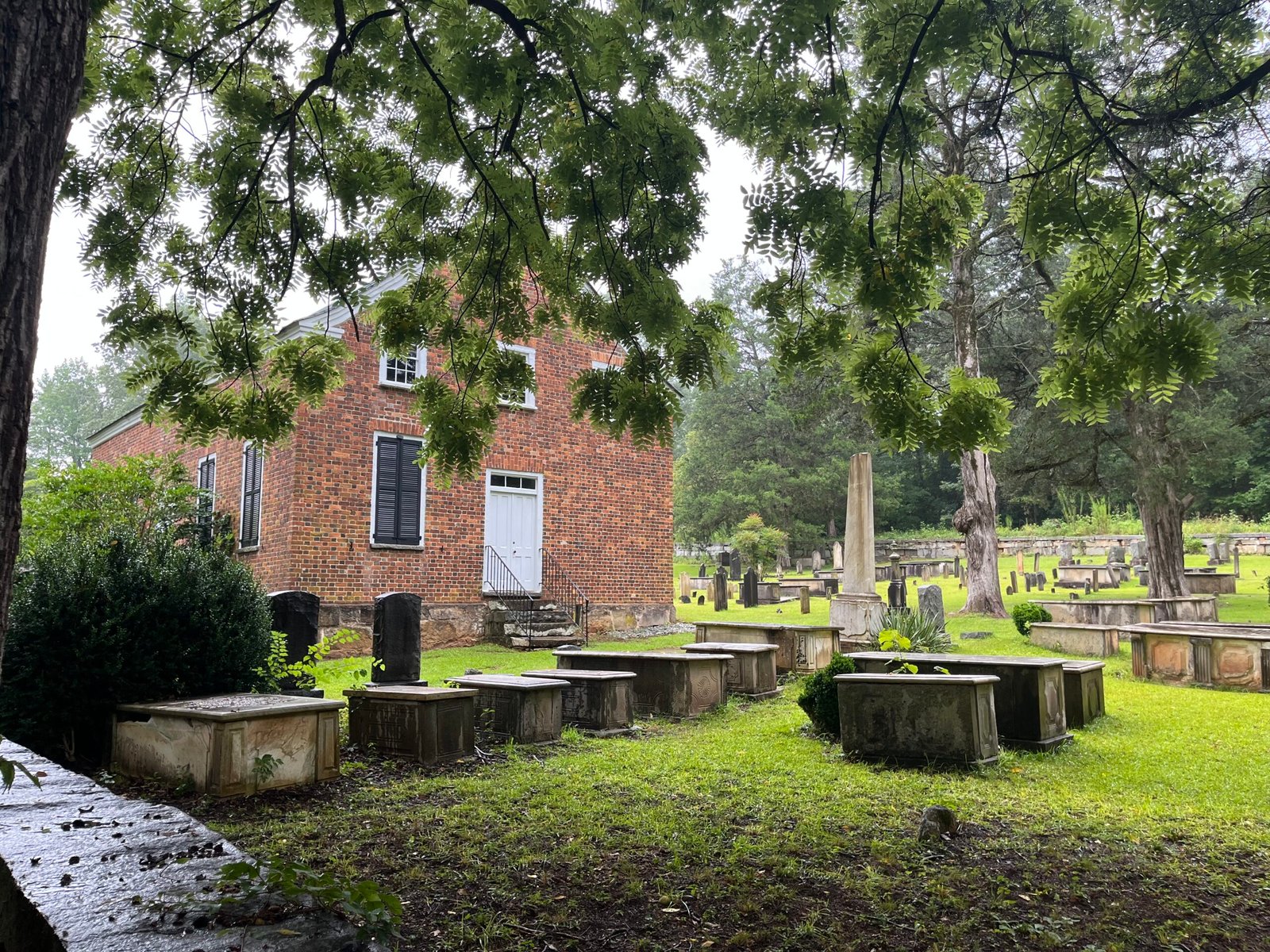


BUILT IN 1788
Originally called the Little River Church and more commonly known as the Old Brick Church, Ebenezer Associate Reformed Presbyterian Church is the birthplace of the Associate Reformed Presbyterian Church as it exists today.
On May 9, 1803, the church was the site of a gathering of ministers and church elders that resulted in the formation of the Associate Reformed Synod of the Carolinas, later to become the ARP Church. Today, it is revered as the “mother church” of the ARP denomination.

It is one of only a handful of eighteenth-century church buildings remaining in the Midlands. Built in 1788, the church sits on a site along the Little River about twelve miles from Winnsboro. It is unusual in that it is made of brick; most meeting houses were wood-frame buildings. It replaced an earlier log church erected soon after Seceder Presbyterians from Scotland and Ireland began settling in the area in the 1770s.
The bricks were hand-molded on-site by members of the congregation. Mrs. Hutchinson, a member of the church, said that she remembered hearing her mother and others tell, that after the crops were laid by, that their fathers and grandfathers would go to the brickyard, and tramp the mud into mortar with their bare feet, put it into molds with their hands, carry it out in the sun to dry, then burning the kilns by night and day, and that to them it was a labor of love and pleasure.
The interior is austere and features long, straight-backed wooden pews, a dais-style pulpit, and a slave gallery. The surrounding wall, steps, and foundation of the Old Brick Church were rebuilt using local blue granite rock in 1852.
Under the ministry of the Reverend James Rogers, the congregation grew until the Civil War. It became dormant in the postbellum era and eventually disappeared from the rolls of the Presbytery before being reorganized by the Reverend A. G. Kirkpatrick in the early 1890s.
The congregation began holding its regular meetings at a new building in the 1920s but continued to gather at the Old Brick Church for special services, a tradition that continues to this day. In 2007, the Old Brick Church Commission was appointed to care for the church and its cemetery.

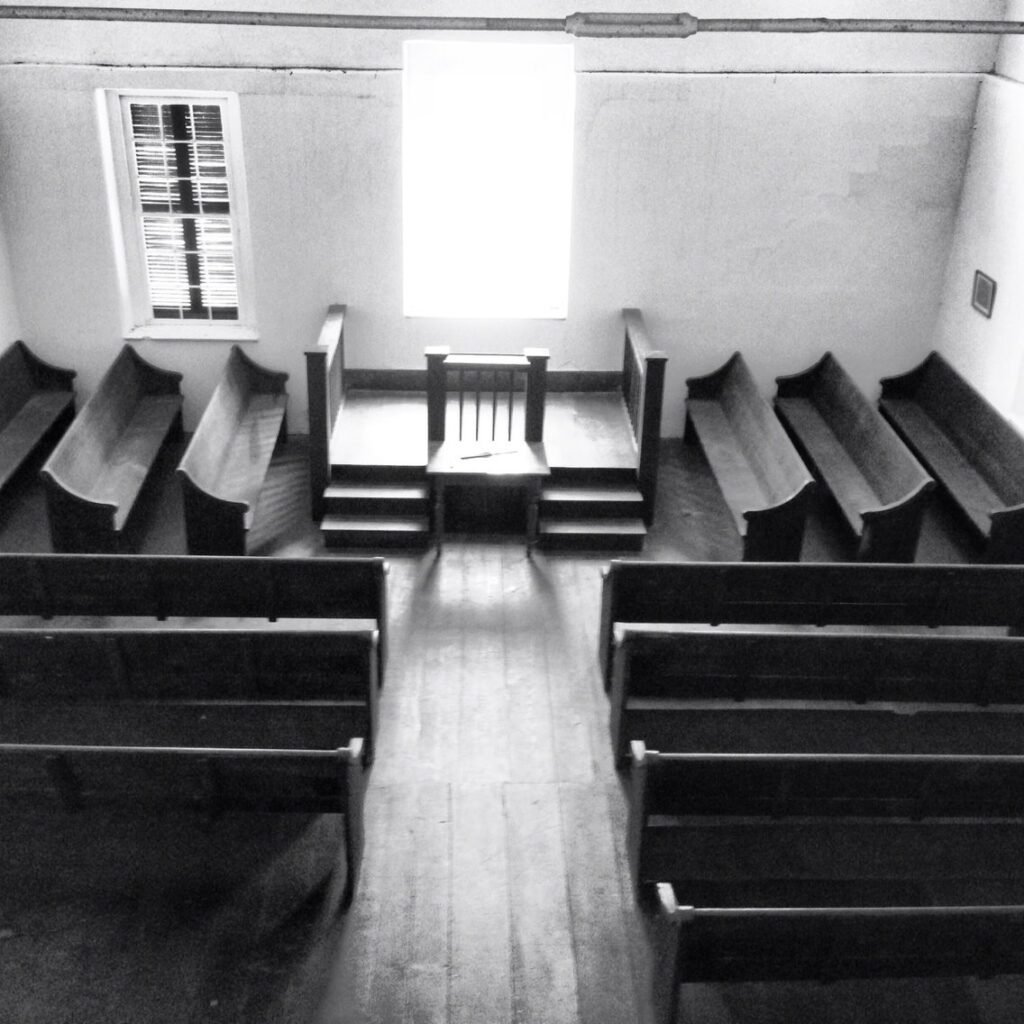
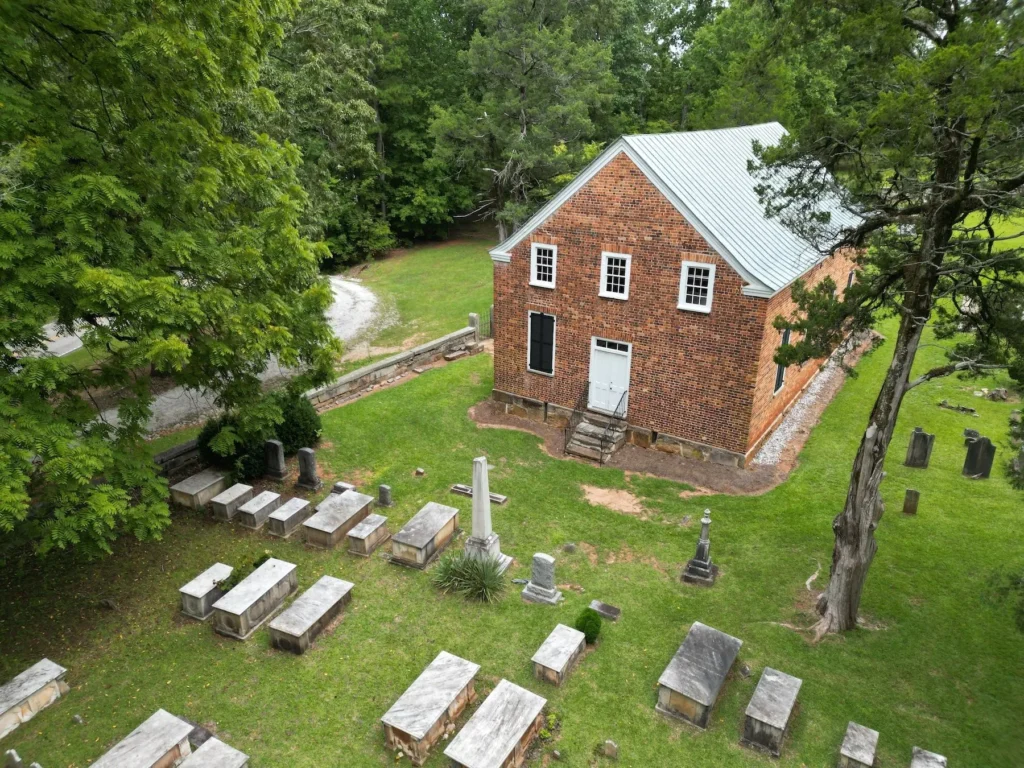
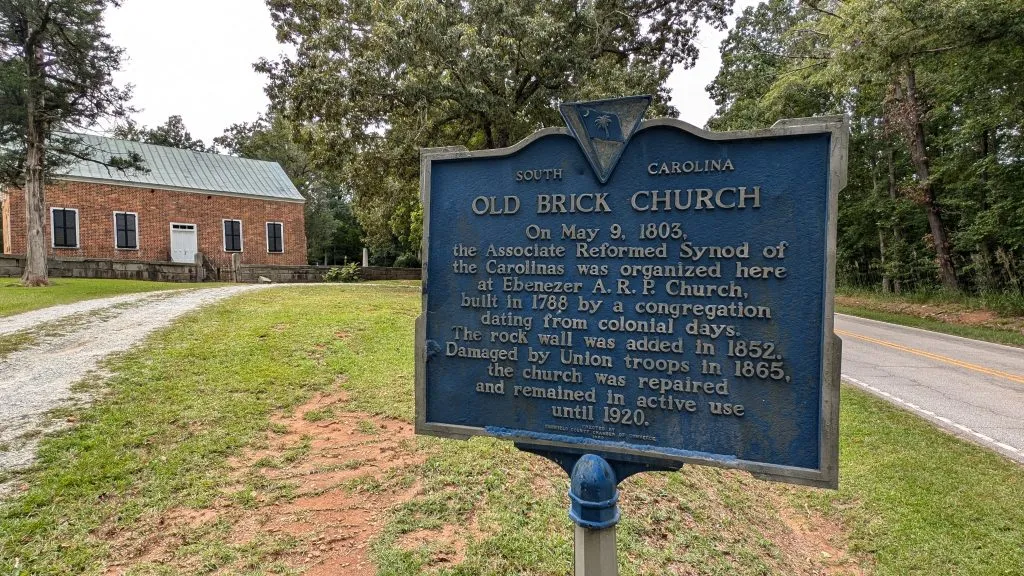
OLD BRICK CHURCH
Listed in the National Register of Historic Places in 1971, the church is also known for an inscription left on an interior wall by a Union soldier during the late stages of the Civil War.
While in pursuit of retreating Confederate forces, Union troops removed portions of the floor and joists to rebuild a bridge over the Little River.
One soldier was so troubled by the undertaking that he penciled an apology on an interior wall: “Citizens of this community – please excuse us for defacing your house of worship so much. It was absolutely necessary to effect a crossing over the creek. A Yankee.”

